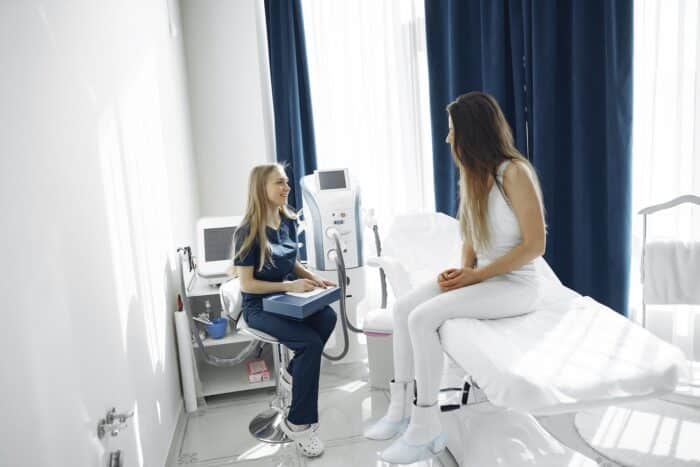Medical assistance is a dynamic career that has recently been on the rise across the country due to the fact that it is the fastest and easiest way to enter the healthcare industry.
The biggest perk offered by this field is that you don’t even need a degree to become a medical assistant.
Medical assistants also have the option of working with specialized physicians in specific fields; for instance, those who work with podiatrists are called podiatric medical assistants.
Read on to learn everything you need to know about podiatric medical assistants, what they do, where they work, how much they earn, and how to become a medical assistant.
If you wish to pursue this advantageous career, you might wonder what the top medical assistant job duties are.
A medical assistant is a healthcare worker who assists healthcare professionals with clinical and administrative tasks, ranging from assisting physicians with bedside procedures to scheduling appointments.
Read more on What Is a Medical Assistant?
What is a Podiatric Medical Assistant?
A podiatric medical assistant provides support services to podiatrists, who are healthcare professionals that look after caring for the feet.
They are known to treat patients with disorders or issues regarding the feet, such as bunions, nail infections, or diabetic wounds, among others.
Read: 12 Reasons to Become a Medical Assistant
What Does a Podiatry Medical Assistant Do?
A podiatry medical assistant typically performs all the tasks a regular medical assistant does, encompassing both administrative and clinical duties. Additionally, they specialize in specific tasks related to foot care.
The administrative duties of a podiatric medical assistant entail the following:
- Maintaining organization around the clinic or office. Since medical assistants often multitask, they must have good organizational skills.
- Ensuring that paperwork and medical supplies are well-stocked and readily available to ensure smooth office operations.
- Managing appointment scheduling and assisting patients in scheduling appointments that suit their needs and ensuring that the office maintains a timely schedule.
- Handling payments. Collecting payments from patients and submitting insurance claims are often part of the medical assistant’s responsibilities.
The clinical responsibilities of a podiatric medical assistant encompass the following:
- Measuring vital signs, taking accurate measurements of blood pressure, heart rate, respiratory rate, and temperature for each patient.
- Assisting with bedside procedures since podiatric medical assistants may have increased opportunities to assist with procedures conducted at the bedside compared to other types of medical assistants.
- Caring for toenails. Assisting patients who may have difficulty reaching their feet to care for their toenails.
- Applying casts. Assisting the podiatrist in using casts, foot braces, and splints after bedside procedures or foot injuries.
- Applying creams. Assisting patients in using creams and ointments to areas that are hard to reach, such as toes and heels, for various foot conditions involving skin problems.
- Taking blood samples. Although the focus is on the feet, podiatric medical assistants may also need to draw blood for laboratory testing.
Also read: CMAA vs CCMA
Where Do Podiatry Medical Assistants Work?
Podiatric medical assistants typically work in podiatry offices or outpatient clinics, which can be found in various locations nationwide. Their workday often involves transitioning between administrative and clinical tasks, and they may move from room to room throughout the day.
The work environment is usually fast-paced, and medical assistants may spend significant time walking and being physically active.
Read more on Where Can Medical Assistants Work?
What Are The Skills Required to Become a Podiatry Medical Assistant?
Successful podiatric medical assistants require a diverse set of skills and medical knowledge, apart from regular medical assistant skills, such as:
- Organization: The ability to manage multiple tasks and patients efficiently, switching between them smoothly throughout the day.
- Compassion: Displaying kindness and empathy towards patients who may be in pain, discomfort, or feeling embarrassed.
- Dexterity: Proficiency in handling small instruments and performing delicate procedures such as removing stitches.
- Endurance: Being physically and mentally prepared to work diligently during busy shifts.
- Medical terminology: Familiarity with basic medical assistant terminology to effectively communicate with doctors and understand patient care instructions.
- Computer skills: Proficiency in using computers for various tasks such as billing, scheduling, and electronic health record (EHR) charting to accurately document changes in patient conditions.
- CPR certification: Basic knowledge of CPR (Cardiopulmonary Resuscitation) and being certified in CPR, as it is often a requirement for medical assisting jobs to handle emergencies and provide immediate life-saving care.
- Phlebotomy: Knowledge and skills in drawing blood, as phlebotomy may be a part of a podiatric medical assistant’s responsibilities. Some medical assistants may choose to undergo additional training and certification in phlebotomy to enhance their skills in this area.
Also see: Can Medical Assistants Draw Blood?
Job Outlook & Salary: Podiatry Medical Assistants?
Compared to other entry-level healthcare jobs, medical assistants receive a decent wage. According to the U.S. Bureau of Labor Statistics (BLS), the national average salary for a medical assistant is approximately $37,000 per year or $18 per hour.
For those who specialize in podiatry, the salary can be slightly higher. Podiatry medical assistant jobs typically start at $18 per hour and can go up to $25 per hour, though there is no government data available for this; these figures have been pulled from various job board sites.
Aside from the competitive salary, job security is also a compelling factor to consider. Employment opportunities for medical assistants are projected to increase by 16% until 2030, indicating a favorable job market for those pursuing a career in this field.
Read more on: Medical Assistant Job Outlook

Do You Want To Become a Medical Assistant? Check Out Free Medical Assistant Masterclass!
In our masterclass you learn:
- How to be a medical assistant faster…in just 4 months!
- Avoid student debt & driving to classes
- #1 thing employers want from Medical Assistants
- How to stand-apart & get a university certificate for a strong resume
How To Become a Podiatry Medical Assistant?
If you are interested in becoming a podiatric medical assistant, you can follow these steps:
Also see: Medical Assistant Career Path
Obtain your high school diploma or GED:
In order to pursue a career as a medical assistant or enroll in a medical assisting program, you will need to have a high school diploma or equivalent, such as a GED.
Also read: Accelerated Medical Assistant Program
Apply for a certification program:
While certification is not mandatory, most employers prefer hiring certified medical assistants.
There are three main methods of getting your medical assistant training, getting an associate’s degree from a technical university, getting a diploma from a community college, or completing an online training program.
See also: Medical Assistant Certificate Requirements
Completing your training through online training programs is the most recommended, as it offers several advantages over other methods.
It allows you to complete your training much faster, in as little as 6 months, allows you to learn at your own pace and time schedule and from the comfort of your own home, and costs much less than its alternatives (See: Medical Assistant Programs Cost).
Also read: Is Medical Assistant Degree Required?
Gain clinical experience:
Once you have completed your medical assisting program, gaining practical clinical experience by interning or working in a healthcare setting, such as a podiatry office or clinic, is beneficial to enhance your skills and knowledge further.
Also see: How to get Medical Assistant jobs with no experience
Apply for podiatric medical assistant jobs:
After obtaining your certification and gaining relevant clinical experience, you can start applying for podiatric medical assistant positions in podiatry offices or outpatient clinics.
By following these steps, you can work towards becoming a qualified podiatric medical assistant and pursue a fulfilling career in the field of podiatry.
Also see: Is Medical Assistant a Good Career?
Conclusion
In summary, a podiatric medical assistant is a key player in the world of foot and ankle care. From assisting in procedures to managing patient records, their dedication ensures the smooth operation of podiatry offices. Podiatric medical assistants are essential in providing comfort and support to both practitioners and patients, making strides in promoting foot health and enhancing the overall podiatric experience.
See Other Types of Medical Assistants:
- Pediatric Medical Assistant
- Ophthalmic Medical Assistant
- Cardiology Medical Assistant
- Dermatology Medical Assistant
- Military Medical Assistant
Related Resources:
- How Long Does It Take to Become a Medical Assistant
- Certified Clinical Medical Assistant
- Medical Administrative Assistant
- CMA vs CNA
- Is Medical Assistant School Hard?
- Medical Assistant vs EMT
- Medical Assistant Degree vs Certificate
- National Certified Medical Assistant NCMA
- Certified Medical Assistant
- Medical Assistant Degree Online 6 Weeks
Related Articles
-
How to Be Successful in College in 2022 – 7 Simple Tips to Succeed
-
How Do Scholarships Work? Read This First…Truth is Shocking
-
7 Best College Majors 2024: What Should I Major In?
-
How to Choose a College – 10 Things You Must Consider in 2024
-
Why Go to College? Top 13 Benefits for Adult Students in 2022
-
Top 5 Best Alternatives to Community College for 2024








